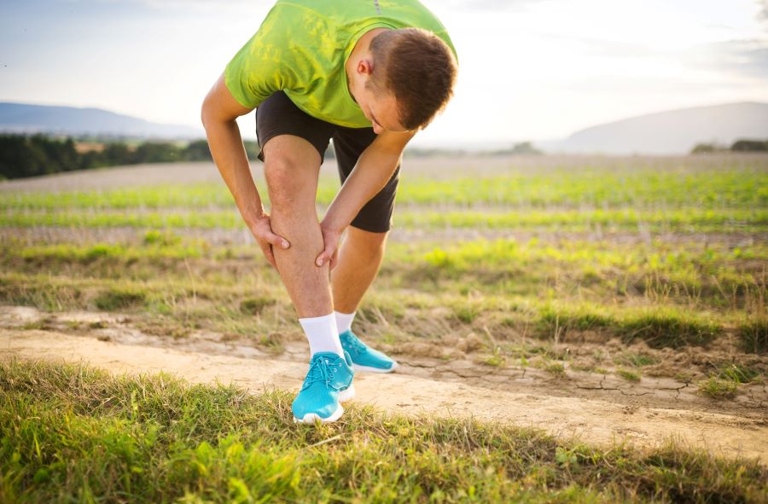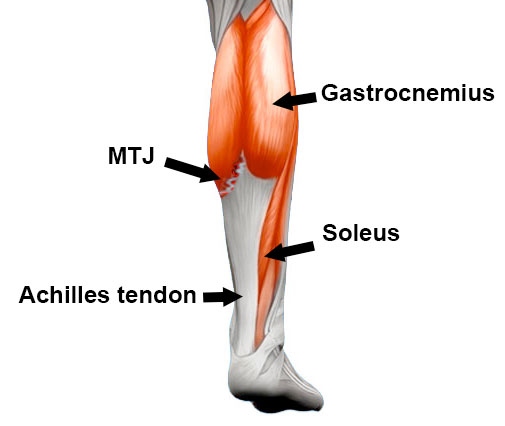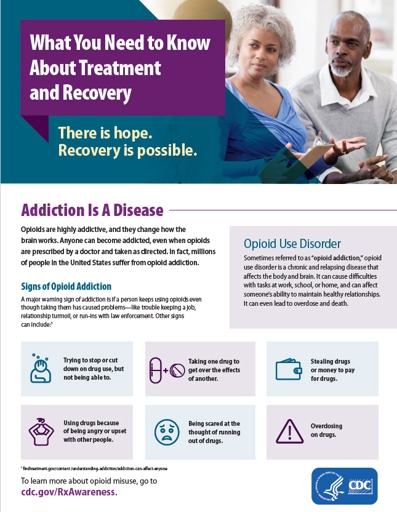If you’re a cyclist with a calf strain, you’re probably wondering how you can get back on the bike. This complete guide will help you understand your injury, how to treat it, and when you can start cycling again. We’ll also give you some tips on how to prevent a calf strain in the future.
Can You Cycle with a Calf Strain?
If you have a calf strain, you may be wondering if you can still cycle. The answer is yes, but you need to take some precautions.

The calf is a large muscle group that is used a lot in cycling. When the calf muscle is overused, it can become strained. Calf strains are common among cyclists.
A severe calf strain can be very painful and may require medical attention. A calf strain can range from mild to severe. A mild calf strain may only cause some discomfort and can be treated with home remedies.
If you have a calf strain, you should rest the muscle as much as possible. Ice the muscle for 20 minutes several times a day. You can also take over-the-counter pain medication if needed.
If the pain is severe or if you are having trouble walking, you should see a doctor. Severe calf strains may require physical therapy or even surgery.
Once the muscle has healed, you can slowly start to increase your activity level. Start with some light cycling and gradually increase your mileage. With proper treatment, most calf strains will heal within a few weeks.
Just be sure to listen to your body and take it easy until the muscle has fully healed. If you take the necessary precautions, you can cycle with a calf strain.
How to Know You Have a Calf Strain
Calf strains are a common injury among cyclists, and can range from mild to severe. While a mild calf strain may only cause some discomfort and stiffness, a severe calf strain can result in significant pain and disability. Here are some signs and symptoms that may indicate you have a calf strain: If you suspect you have a calf strain, it is important to seek medical attention to ensure an accurate diagnosis and proper treatment.
How to Treat a Calf Strain
The calf is a large muscle group that extends from the back of the knee to the heel. The gastrocnemius and soleus muscles make up the calf. A calf strain is a common injury among cyclists. These muscles are responsible for plantar flexing the foot, which is essential for pedaling.
A calf strain can also be the result of a direct blow to the muscle, such as from a fall. This can happen when you suddenly increase the intensity of your cycling or when you ride over rough terrain. A calf strain can occur when the muscle is overloaded or stretched beyond its capacity.

You may also have difficulty plantar flexing your foot. Symptoms of a calf strain include pain, swelling, and bruising. The pain is usually worst when the muscle is contracted, such as when you are pedaling.
They will be able to confirm the diagnosis and rule out other potential causes of your symptoms. If you think you have a calf strain, it is important to see a doctor.
There are several things you can do to treat a calf strain. You should avoid activities that aggravate your symptoms. And elevation of the leg can help reduce swelling. Ice can be used to reduce swelling. Compression can also help. Rest is the most important thing.
Physical therapy may also be recommended. Your doctor may also prescribe medication to help relieve pain and inflammation.
If you have a calf strain, it is important to follow your doctor’s recommendations. With proper treatment, most people make a full recovery.
Do You Need a Walking Aid?
However, if you have a moderate or severe calf strain, you may need a walking aid to help you walk. If you are unsure whether or not you need a walking aid, you should consult your doctor or physiotherapist. If you have a mild calf strain, you may not need a walking aid. The answer depends on the severity of your injury. If you have a calf strain, you may be wondering if you need a walking aid.
How Long Does it Take to Heal?
Here’s what you need to know about healing times for a calf strain, and what you can do to speed up the process. But if the injury is more severe, it can take months. If you’re lucky, a calf strain will heal in a couple of weeks.
Starting Back After a Calf Strain
While a calf strain can be a minor injury, it can also be a more serious injury that requires a longer period of recovery. The following is a guide on how to safely start back after a calf strain. A calf strain is a common injury that can occur while participating in activities such as cycling.
Getting Back On The Bike
But don’t despair, with a little bit of care and patience, you can be back on your bike in no time. If you’re a cyclist who has suffered a calf strain, you know how frustrating it can be to be sidelined from your favorite activity. Here’s what you need to know about cycling with a calf strain.
Build Things Slowly
In this section, we will discuss how to build things slowly after a calf strain. A calf strain is a common injury among cyclists, especially those who are new to the sport. However, it is important to take things slowly during the healing process to avoid further injury. The good news is that it is usually a minor injury that will heal with time and proper care.
Recovery is Important
Recovery is an important part of any injury prevention and treatment plan. It helps to reduce swelling, promote healing, and prevent further injury. It is important to listen to your body and give it the time it needs to recover. Depending on the severity of your calf strain, you may need to take a few days off from cycling. Here are some tips for a successful recovery:
-Rest: Take a few days off from cycling to allow your body to rest and heal.
-Ice: Apply ice to the injured area for 20 minutes at a time, several times a day.
-Compression: Use a compression bandage or wrap to help reduce swelling.

-Elevation: Elevate your leg above heart level to help reduce swelling.
-Stretching and strengthening: Once the pain and swelling have subsided, start slowly stretching and strengthening the calf muscle.
Frequently Asked Questions
1. How can I cycle with a calf strain?
You can cycle with a calf strain by using a stationary bike or a recumbent bike. You should avoid using an upright bike, as this can aggravate your injury.
2. How long should I cycle for?
You should cycle for 20-30 minutes at a time. If you feel pain, stop and rest.
3. What resistance should I use?
You should use a resistance that is comfortable for you. If you feel pain, stop and rest.
4. What are some other exercises I can do to help my calf strain?
You can try some calf raises or toe raises. You should avoid any exercises that put strain on your calf muscle.
5. What should I do if the pain gets worse?
If the pain gets worse, you should stop cycling and rest. If the pain persists, you should see a doctor.
Final thoughts
If you’re dealing with a calf strain, cycling can be a great way to stay active while you heal. Just be sure to listen to your body and start slowly. With the right precautions, you can safely keep up with your training while you recover.
